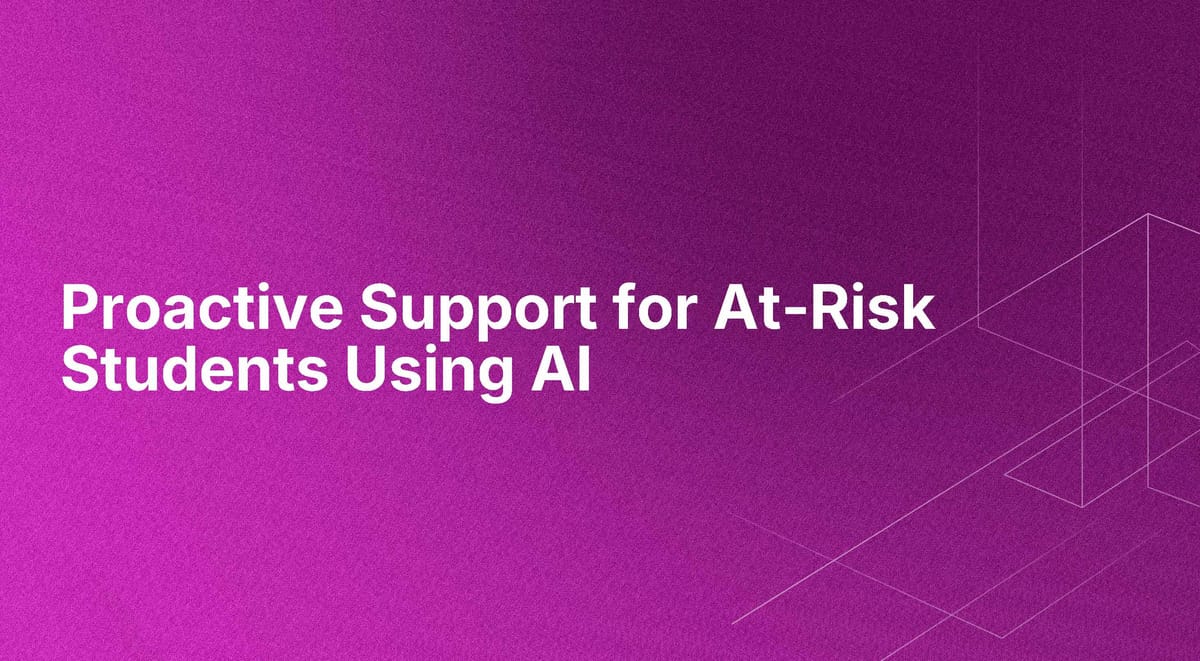Proactive Support for At-Risk Students Using AI

Leveraging AI to Improve Graduation Rates in Higher Education
Overview
The higher education sector is under continuous pressure to improve student outcomes and graduation rates. Universities employ a variety of strategies to help students succeed academically, from offering peer tutoring and office hours to course selection guidance. However, the challenge lies in identifying which students need assistance early enough to intervene effectively. With increasing competition and funding contingent on performance metrics like graduation rates, universities are on the lookout for innovative solutions.
Problem Statement
The 6-year graduation rate for full-time, degree-seeking undergraduate students in the US is only 62%. Unsuccessful course outcomes such as Drops, Fails, Withdrawals, and Incompletes significantly contribute to this attrition. The repercussions of failing a class can be both mentally and financially devastating, particularly impacting first-generation students and students of color at a higher rate. The critical challenge lies in identifying at-risk students early enough to provide the necessary support and avert academic failures.
Solution Overview
By utilizing historical academic data, AI models can be designed to proactively identify students who are likely to achieve unsuccessful course outcomes. The AI solution analyzes various data points, including attendance records, past grades, and engagement levels, to predict which students are at risk. These initial predictions can be continuously updated as more data becomes available throughout the term, providing faculty and support staff with timely insights. Technically, the system leverages machine learning algorithms that can continuously ingest and analyze new data inputs, refining its predictions and improving accuracy over time. The architecture would involve data collection, model training, and prediction generation phases, which are then integrated into a user-friendly interface for the faculty to access and act upon. From a business perspective, improving graduation rates not only enhances the university’s reputation but also meets performance-based funding criteria, providing a financial incentive to invest in such AI solutions. Implementation would require a collaborative effort from data scientists, IT professionals, and academic staff to ensure the data is correctly sourced and interpreted. Universities must also establish protocols for intervention once an at-risk student is identified, utilizing resources like additional tutoring, counseling, or adjusting course loads to better support the students identified by the AI models.





